Do you have a question about the Miller CST 282 and is the answer not in the manual?
Explanation and meaning of safety symbols used throughout the manual to indicate hazards.
Identifies and explains common hazards associated with arc welding processes and equipment.
Details potential hazards during equipment installation, operation, and maintenance procedures.
Provides warnings regarding chemical exposure as required by California law.
Lists key industry standards and regulations for welding safety and practices.
Information on electromagnetic fields (EMF) and their potential impact on medical implants.
Defines various symbols and technical terms used in the manual for clarity and understanding.
Indicates the location of the serial number and rating label for product identification.
Details the end-user license agreement and third-party terms for the equipment's software.
Guidance on default welding parameters and settings, emphasizing user responsibility for evaluation.
Presents technical specifications, including voltage, amperage, duty cycle, dimensions, and weight.
Describes the output characteristics of the welding power source, which may vary with settings.
Details the IP rating, operating, and storage temperature ranges for the equipment.
Explains duty cycle and the consequences of overheating, including protective measures.
Provides guidance on choosing a suitable and safe location for operating the welding equipment.
Details weld output terminals and guidelines for selecting appropriate cable sizes based on length.
Provides information on the Remote 14 receptacle and its associated socket functions.
Illustrates and identifies the positive and negative weld output terminals on the unit.
Details the correct connections for TIG Lift-Arc DCEN welding process.
Details the correct connections for Stick DCEP welding process.
Provides essential electrical service requirements, including voltage, current, and conductor sizing.
Step-by-step instructions for connecting the unit to a 1-phase input power supply.
Step-by-step instructions for connecting the unit to a 3-phase input power supply.
Identifies and explains the various controls and indicators on the equipment's interface.
Describes the function and operation of each control on the equipment's interface panel.
Outlines the procedure for starting a stick welding arc using the scratch start technique.
Explains the method for initiating an arc using the Lift-Arc start feature.
Details the Fan-On-Demand feature, which controls internal cooling fan operation.
Instructions for enabling the Voltage-Reducing Device (VRD) mode for low open circuit voltage.
Provides steps for downloading and installing software updates for the Miller CST 282.
Outlines regular maintenance tasks to ensure the equipment's proper functioning and longevity.
Instructions for safely cleaning the internal components of the unit using airflow.
Explains the various 'Help' displays that indicate potential malfunctions or issues with the unit.
Provides a guide to diagnosing and resolving common problems encountered with the equipment.
Guidance on selecting the appropriate tungsten electrode based on diameter, amperage, and gas type.
Instructions for preparing tungsten electrodes for DCEN or AC welding, including grinding.
Instructions on proper torch positioning, including angles and tungsten extension for TIG welding.
Describes correct torch movement techniques for welding with and without filler rod.
Illustrates optimal torch and tungsten positioning for various weld joint types.
Explanation and meaning of safety symbols used throughout the manual to indicate hazards.
Identifies and explains common hazards associated with arc welding processes and equipment.
Details potential hazards during equipment installation, operation, and maintenance procedures.
Provides warnings regarding chemical exposure as required by California law.
Lists key industry standards and regulations for welding safety and practices.
Information on electromagnetic fields (EMF) and their potential impact on medical implants.
Defines various symbols and technical terms used in the manual for clarity and understanding.
Indicates the location of the serial number and rating label for product identification.
Details the end-user license agreement and third-party terms for the equipment's software.
Guidance on default welding parameters and settings, emphasizing user responsibility for evaluation.
Presents technical specifications, including voltage, amperage, duty cycle, dimensions, and weight.
Describes the output characteristics of the welding power source, which may vary with settings.
Details the IP rating, operating, and storage temperature ranges for the equipment.
Explains duty cycle and the consequences of overheating, including protective measures.
Provides guidance on choosing a suitable and safe location for operating the welding equipment.
Details weld output terminals and guidelines for selecting appropriate cable sizes based on length.
Provides information on the Remote 14 receptacle and its associated socket functions.
Illustrates and identifies the positive and negative weld output terminals on the unit.
Details the correct connections for TIG Lift-Arc DCEN welding process.
Details the correct connections for Stick DCEP welding process.
Provides essential electrical service requirements, including voltage, current, and conductor sizing.
Step-by-step instructions for connecting the unit to a 1-phase input power supply.
Step-by-step instructions for connecting the unit to a 3-phase input power supply.
Identifies and explains the various controls and indicators on the equipment's interface.
Describes the function and operation of each control on the equipment's interface panel.
Outlines the procedure for starting a stick welding arc using the scratch start technique.
Explains the method for initiating an arc using the Lift-Arc start feature.
Details the Fan-On-Demand feature, which controls internal cooling fan operation.
Instructions for enabling the Voltage-Reducing Device (VRD) mode for low open circuit voltage.
Provides steps for downloading and installing software updates for the Miller CST 282.
Outlines regular maintenance tasks to ensure the equipment's proper functioning and longevity.
Instructions for safely cleaning the internal components of the unit using airflow.
Explains the various 'Help' displays that indicate potential malfunctions or issues with the unit.
Provides a guide to diagnosing and resolving common problems encountered with the equipment.
Guidance on selecting the appropriate tungsten electrode based on diameter, amperage, and gas type.
Instructions for preparing tungsten electrodes for DCEN or AC welding, including grinding.
Instructions on proper torch positioning, including angles and tungsten extension for TIG welding.
Describes correct torch movement techniques for welding with and without filler rod.
Illustrates optimal torch and tungsten positioning for various weld joint types.
| Amperage Range | 5 - 280 A |
|---|---|
| Processes | Stick (SMAW), TIG (GTAW) |
| Duty Cycle | 60% |
| Wire Feed Speed Range | Not applicable |
| Input Phase | 1-Phase / 3-Phase |
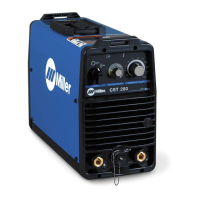
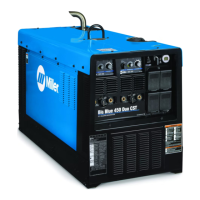
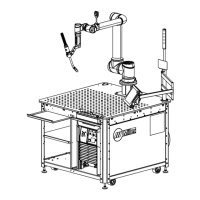
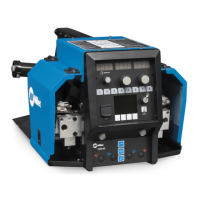

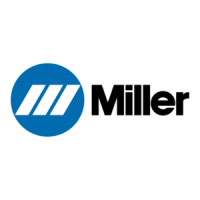
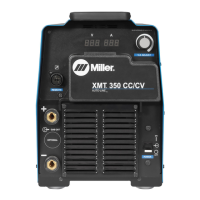
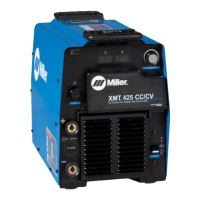
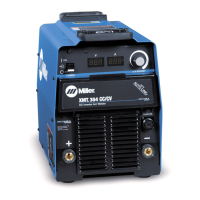

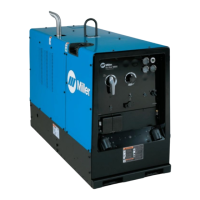

